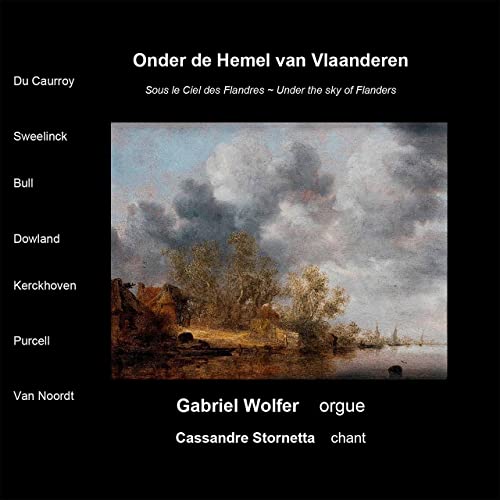Gabriel Wolfer organ, Cassandre Stornetta voice
72:00
Label G 016
Click HERE to buy this on amazon.co.uk – this link is to a digital download only…
[These sponsored links help the site remain alive and FREE!]
This 2021 recital by Gabriel Wolfer is played on an organ built in 2019 by Bertrand Cattiaux for the église Sainte-Jacques, Beurnevésin, in the Swiss Jura. The organ is built in the style of Flemish organs of the 17th century, but with the addition of a pedal organ. The twelve manual registers are available as jeux baladeurs on either of the two manuals, enabling a wide range of registrations, and are scaled and voiced after organs by the Bremser family, dating from the mid-seventeenth century Flanders. The speech is direct and singing, and is well-recorded in this small church. The temperament has 8 pure thirds, and the pitch is A=415Hz. The music, beginning with composers from the Low Countries, Du Caurroy and Sweelink, continues with Dowland and Bull, both known to have had connections there, before returning to more strictly Netherland composers. This is music for manuals only and is well-suited to this instrument, as are the English composers who would not have known the North German style of organ.
For me, the only discordant note is the singer, who has too developed a voice to match the directness and simplicity of the organ. She only sings three numbers – Une jeune filette at the start, the chanson on which the Du Caurroy variations are based and Cornelis de Leeuw’s carol Een kindeken is ons geboren that precedes the Bull version at the end, together with the Purcell Evening Hymn. So it is the organ and its able player who take centre stage.
The programme centres on sets of variations and fantasias, so a variety of sounds embroiders these threads giving us ample opportunity to appreciate the organ’s vocal qualities. In part this is due to its winding, and in part to the action which is clearly all of a piece. The sound is fluid, and I should have liked to hear it with a group of singers, like Vox Luminis, who would match its living, breathing tones so well. I find that I am intrigued, and do not tire of it; the organ builders – who have worked on conserving some distinguished 17th-century organs in France – deserve their reputation. I commend this CD not only for the interesting Flemish programme but also for the chance to hear this interesting and beautifully finished organ.
David Stancliffe
